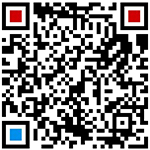1. Clarify the target and audience of the manual
Goal: Unify the design language, improve collaboration efficiency, reduce communication costs, and ensure a consistent user experience.
Audience: Product managers, designers, developers, testing teams, marketing teams, etc.
Scope: Clarify what the manual covers (e.g., UI components, interaction rules, brand guidelines, etc.).
2. The core content framework of the manual
2.1 Design Principles and Values
Product positioning: user groups, core values, brand tonality.
Design principles: e.g. simplicity, usability, consistency, emotional design, etc.
Brand Guidelines: Colors, Fonts, Icons, Graphic Style, Sound/Motion Specifications.
2.2 Design process and methodology
Design process: requirements analysis→ user research→ prototyping→ testing iteration→ development delivery.
Collaboration tools: Figma/Sketch/Adobe XD usage specifications and versioning rules.
User research templates: user personas, journey maps, usability testing templates.
2.3 Visual Design Specifications
Fundamentals:
Color: Primary color, secondary color, disabled color, color ratio.
Font: font size, weight, line height, usage scenario (title/body/button text).
Icons & Illustrations: Style, Size, Fill Rules.
Component Library:
UI components: Interaction and style of buttons, forms, navigation bars, pop-ups, cards, etc.
Responsive design: Adaptation rules for different screen sizes (web/mobile).
Animation specifications: load animations, transitions, and feedback animations (e.g., click feedback).
2.4 Interaction and Experience Specifications
Interaction logic: page jump rules, gesture actions (swipe/long press), form validation logic.
Accessibility: contrast requirements, screen reader adaptation, keyboard navigation rules.
Error handling: error prompt style, solution guidance.
2.5 Development and docking specifications
Design deliverables: Tile naming conventions, annotation tools (e.g., Zeplin), design draft update process.
Code specifications: component naming, CSS variables, and animation implementation.
2.6 Cases and Actual Combat
Best Case: Design analysis of typical pages (such as homepage and personal center).
Counter-examples: Common design mistakes and suggestions for improvement.
3. Visual presentation of the manual
Modular design: Chapters are independent, easy to consult and update.
Visualization example: Illustrate specifications (e.g., color matching, component status) in a combination of graphics and text.
Interactive documentation: Online manuals (e.g. with Figma or Storybook) support dynamic preview of components.
Version management: indicates the update time and changes (for example, V1.0 → V2.0).
4. Tool Recommendations
Design tools: Figma (collaborative), Adobe XD, Sketch.
Document management: Notion, Confluence, GitBook.
Component library tools: Storybook (front-end component display), Zeroheight (design system documentation platform).
5. Maintenance and iteration mechanism
Regular updates: Update manuals based on user feedback, technology trends, and product iterations.
Teamwork: Set up a leader (e.g., design lead) to review changes.
Feedback channels: Set up portals to collect team issues (such as Slack channels or internal forms).
 Precision Design
Precision Design with us:15302653652
with us:15302653652

